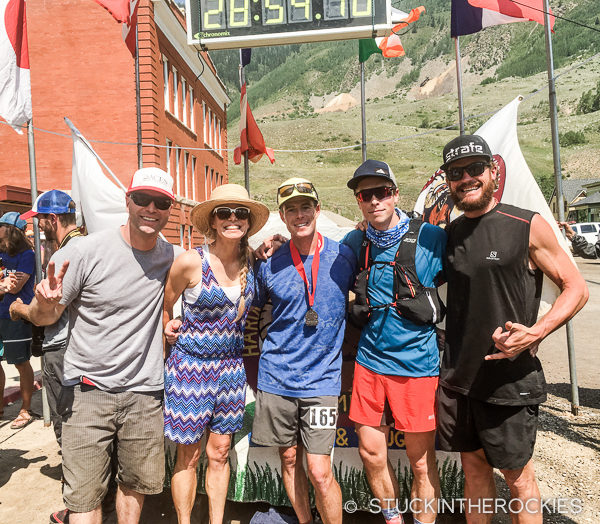
With the team at the finish. Tim Mutrie, Christy, myself, Pete Gaston, and Eric Sullivan (from L to R). Thank you guys!
Summing up the Hardrock 100 is always a challenge, but when it goes well it’s admittedly easier. This year, my 8th time running, was relatively smooth. I finished in 28:52, my 3rd fastest time, which was good enough for 7th place overall. But there’s more that goes into a good race there than you can tell by just looking at the clock.
Before I delve into the details of the race I’d like to thank my crew who helped keep the ship on course. Christy and Tim Mutrie were on the scene as usual, coordinating things and knowing exactly what was needed and where. Pete Gaston and Eric Sullivan paced me through the back half and kept me moving when it got tough. Rickey Gates was a unexpected extra who tended to appear in random locations along the course, motivating me through words and, believe it or not, his accordion. And there were loads of other friends out there, some on the passes, others at the aid stations, all of whom offered so much encouragement and enthusiasm. Thank you all.
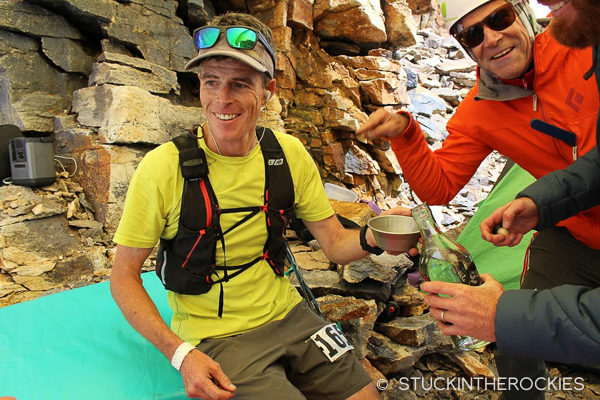
The always hospitable crew up at Virginius Pass around mile 37 and 13,100 feet. Ty Draney pours the shot of Sombra Mezcal while Aid station boss Roch Horton cheers him on (photo Jared Campbell).
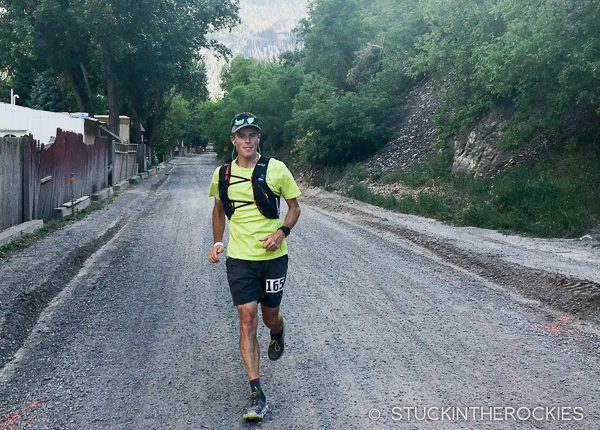
Arriving to Ouray at mile 43 around 5pm.
There are actually a number of different ways to measure how the race went. Overall time and finishing place are the obvious measures of success, but they don’t tell the whole story. They don’t reveal if a runner made the splits they wanted, or if they went out too fast and blew up mid-race and had to nap in the grass before continuing. Everyone has a race strategy of some sort and the final results don’t always reflect if things followed the plan, or if the wheels came off at some point.
I’ve now run this loop course eight times, four in both directions. I’ve gotten to know the ins-and-outs pretty well and I have yet to see a year where everything was just ideal. It’s the nature of the course that there are always adverse conditions or challenges. This year we were fortunate to have relatively dry conditions. It was largely snow-free and the creeks were low enough that you could often skip across them and stay dry. But there were still plenty that we had to wade through. The challenge came from the temperatures. The clear, storm-free forecast didn’t throw and rain or lightning at us, but it was really hot.
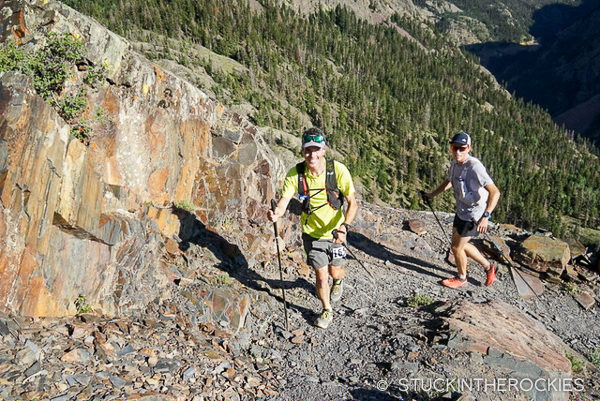
Heading up Bear Creek out of Ouray with Pete Gaston.
Looking back on it, I put this year down as one of my best. My time was about 30 min off my PR, but I feel as though I executed on my plan and managed the challenges better than I have ever been able to do before. I’m happy about that.
I started the race in my usual spot, I crossed Mineral Creek at about mile 2 in around 25th place. As I look back in hindsight, with the exception of a little leapfrogging with some of the leading ladies around me, from that point on I only moved forward in the field, no one came from behind for the entire race.
I pulled into Telluride around 20th and acknowledged the conditions. The heat concerned me, the climbs up Grant-Swamp, Oscar’s, and Virginius are all south facing and exposed to the sun. I was drinking a lot, about a liter per leg (between aid stations) but I was sweating so much I knew I was falling behind.
I moved up a few more spots on the way up Virginius, I passed two runners moving slower, another was hunched over and struggling, stopping quite a bit. A third person had his ankle taped up, he had sprained it and was ending his race at Ouray. Once over the pass and down the other side the temperature seemed to get even warmer. Running with my buddy Grant from New Zealand, we passed another front-runner, walking down the road, seemingly in a bit of distress.
I pulled into Ouray around 5pm where it was 88 degrees and met the crew. I was hoping by that time of the day it would start cooling off but it didn’t. As Pete and I left Ouray I was still sweating profusely and I knew if I didn’t get ahead of it, I risked entering the night dehydrated. And that’s not a good thing.
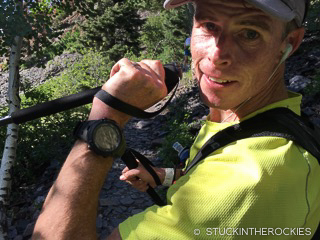 Twelve hours in, about 45 miles, I was still sweating bullets at 6pm. |
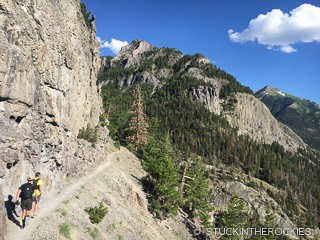 On the narrow Bear Creek Trail, heading up to Engineer and cooler temps. |
I’ve been in that position before and I’ve seen countless others there as well through the years. It isn’t good. Any number of issues can arise after a long day and dehydration— the muscles can stop working well and the stomach might shut down. Your temperature regulation fails and you might struggle to keep fluids down. Other times you can’t or just don’t want to eat, and then things deteriorate further. If you somehow manage to continue on despite all of that, the urge to sleep will settle in with the arrival of the night. Your pace could slow to a crawl.
 Heading up to Engineer Pass and over to Grouse Gulch. |
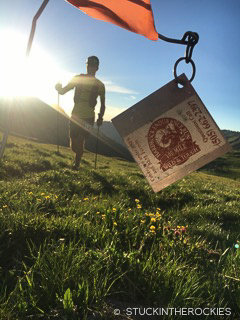 Pete doing double duty as pacer and photographer. |
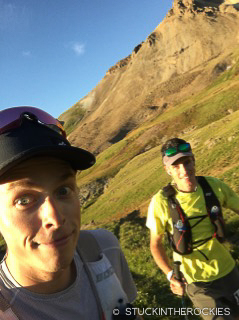 Finally cooling off, things felt better as we headed towards Grouse. |
As we made our way out of Ouray and up to Engineer, Pete kept me drinking more than I normally would, and by the time I got to Grouse I had downed nearly four liters of fluids (over about 15 miles and four hours). I was actually peeing, and it was somewhat clear. It was during that time that we saw multiple other runners showing those aforementioned signs— some on the trail with a seriously slow pace, others were horizontal and staring down a DNF in the tent at Grouse. I changed for the night at Grouse and left with Sully soon after arriving.
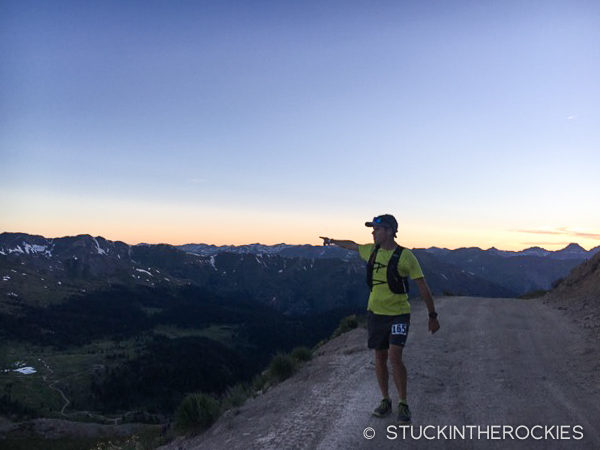
Atop the pass, looking out at where this crazy loop goes.
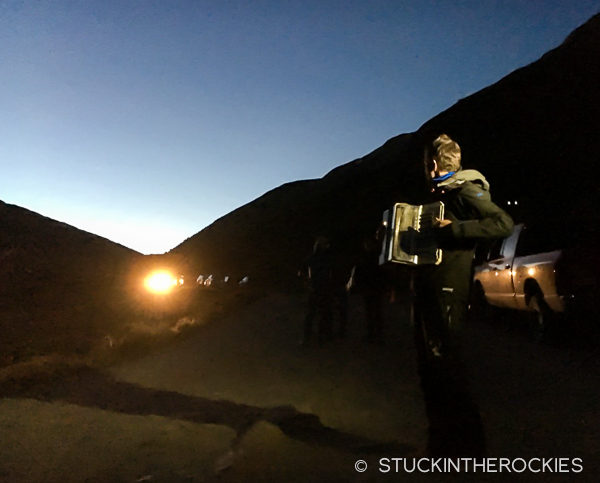
Waiting for me to arrive at Grouse.
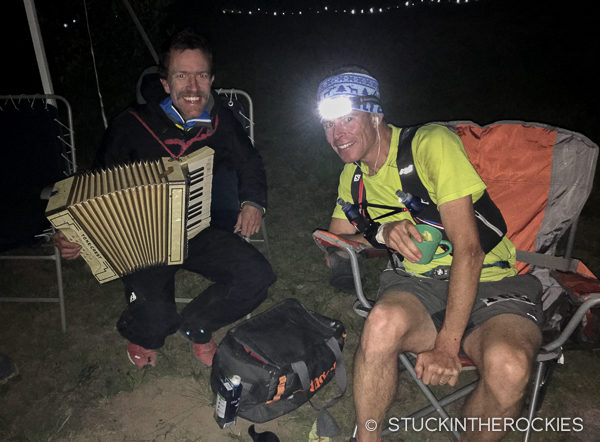
I highly recommend some theme music when at aid stations.
By now a lot of the leaders who went out fast and blew up were officially done, and we headed up Handies in around 10th place overall, at about 9:30pm. There were lights ahead, which is always motivating. A short while later on the upper part of Handies we passed two other runners. We reached the top of Handies before midnight.
We cruised down to Sherman and tried not to get reeled in. We stopped in Burrows for a moment and then Sherman for about five minutes, and started up Cataract Creek. We were told Anna Frost left the aid station 36 minutes earlier.
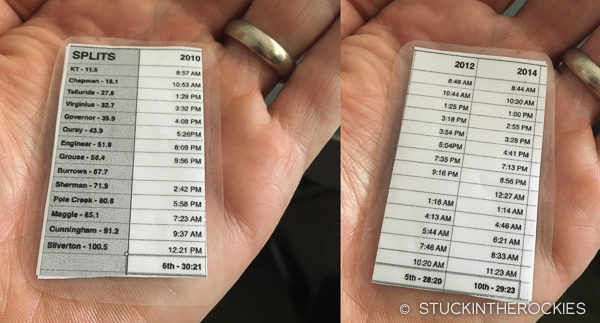
My split sheet with my times from ’10, ’12, and ’14.
Sully and I began the trip to Pole Creek, and we were all alone. Past Cataract Lake, over into Pole Creek, to the aid station, we hardly saw a headlamp in front or behind. It was late in the night but I had yet to feel truly sleepy. We arrived at Pole Creek around 4:45am, and I knew my splits were still somewhat on track, just a little off PR pace. I was coherent and talking with Sully, I wasn’t as tired as I have been in past years. I knew I was moving well, and that actually gave me more energy. Not that it was ever the goal, but we were also about to close in on Anna.
The sun rose as we headed up and over to Maggie Aid station. I just walked through without stopping and we cruised to Cunningham at about 8:09am.
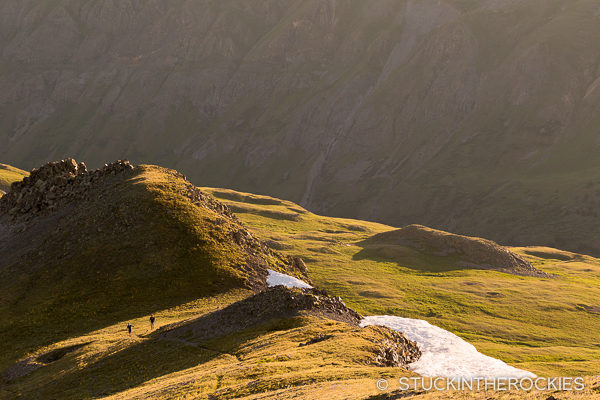
Coming up from the Maggie Aid station with Sully just after sunrise. (Photo Daniel Sohner)
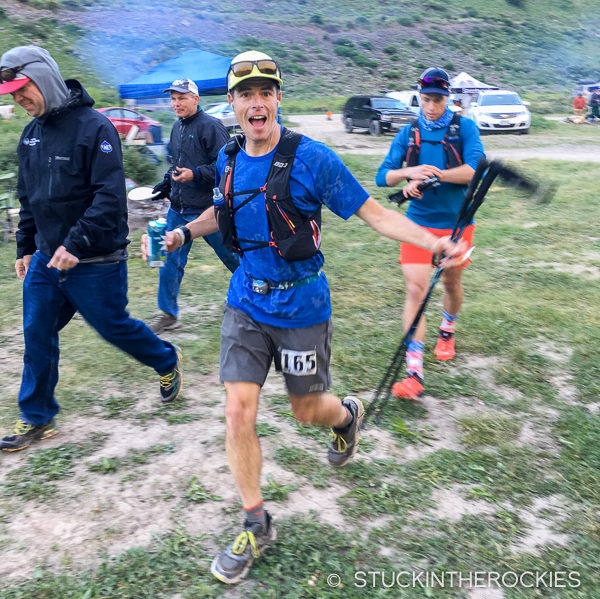
Pulling into Cunningham Gulch at mile 91 and 26+ hours, after a relatively smooth night.
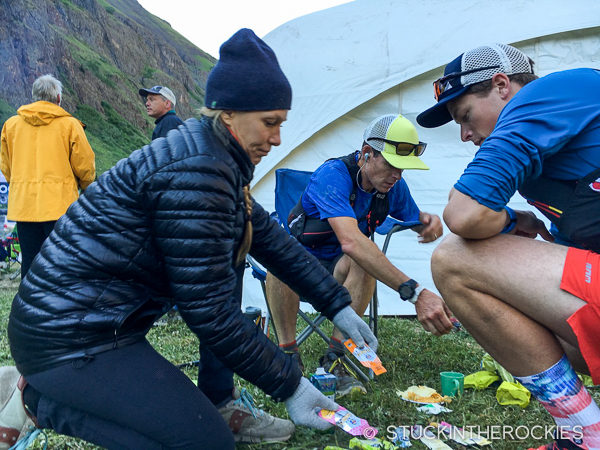
Christy and Pete help with the quick transition. Lights, sleeves, and buff are switched for a hat, sunglasses, and sunscreen.
Pete took over for Sully who was awesome through the whole night, and we started up Dives Basin, which was probably the most tired I felt all race. Anna and her pacer caught back up and passed us and we all began the descent to the finish almost as a group of four.
We knew it was possible to still get a sub-29 hour finish but it would require a bit of a hustle. Some years that’s a lot to ask over that stretch but this year it seemed totally reasonable, partly due to the dry conditions which kept my feet in better shape. Pete and I ran down the mountain and into town in what was possibly my fastest miles of the whole race.
We made it to the rock in 28:52.
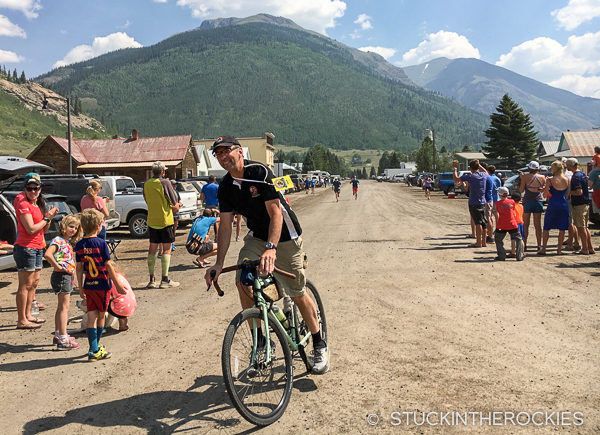
Race Director Dale Garland rides into the finish corral as I approach down the road.
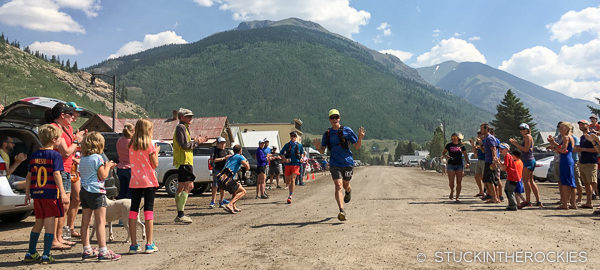
Trying to signal “eight” as I pull into the corral.
I’ve been extremely fortunate to have been able to run Hardrock as many times as I have. I never take it for granted. Everyone who is there knows it’s a privilege and treats it as such, and whether you meet your goals or come up a little short, it doesn’t actually matter. But it’s even more special to be able to come away from it feeling as though you gave it your best and feel good about how it all unfolded.
2016 was a good one, I’m going to let it sink in for bit.
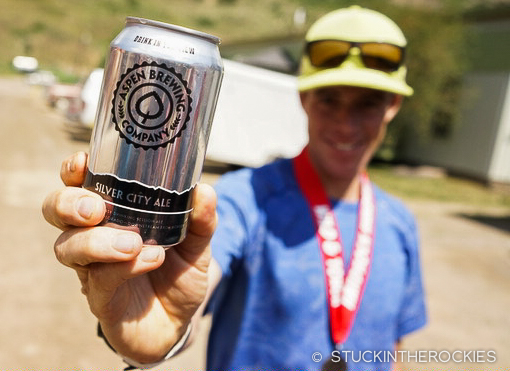
Cheers to another good one. And thanks to the Aspen Brewing Company for sending one of their first 6 packs of canned Silver City Ale.
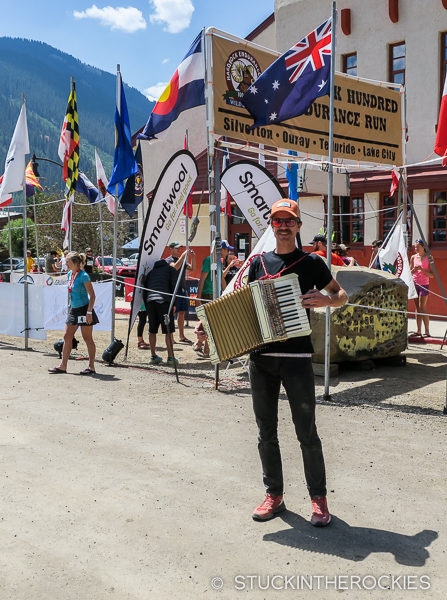
Still going….
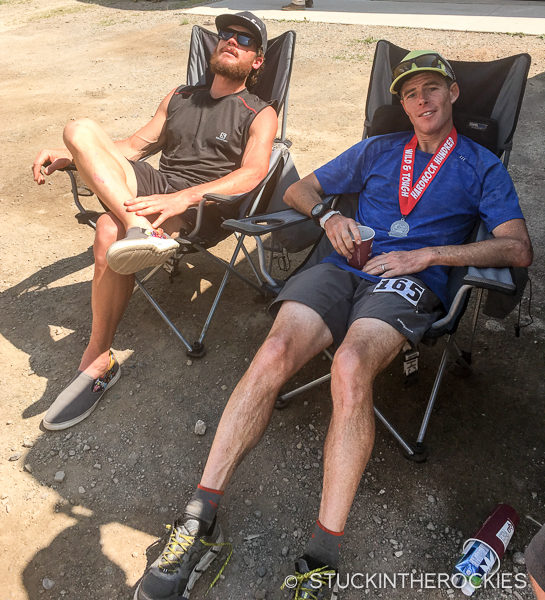
It was a long night out for the both of us. Thanks Sully!
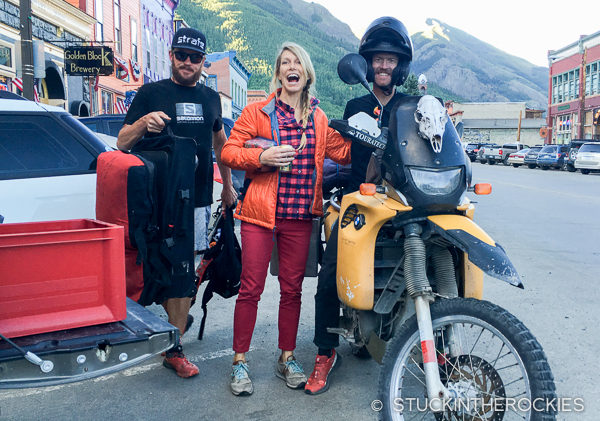
Definitely a motley crew, hopefully they’ll be available if I get in again next year.

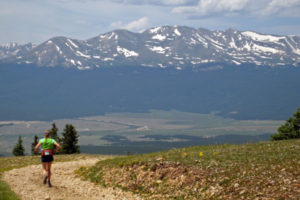

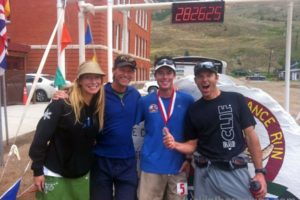
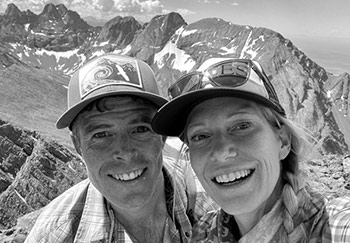





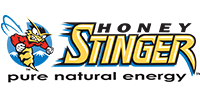
14 Comments
Leave your reply.